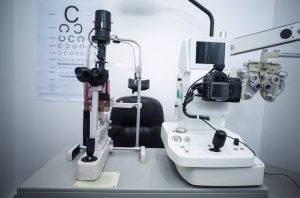All Categories
Featured
Table of Contents

Regular eye evaluations are essential for keeping excellent vision and discovering prospective eye health and wellness issues early. However, the frequency of these exams can differ significantly based on a person's age, way of life, and overall health. Recognizing the suggested routine for eye exams can aid ensure that individuals of all ages get appropriate care and monitoring for their eye health and wellness.
Infants and Toddlers (0-2 Years)
For babies and young children, eye examinations are essential for identifying any type of possible vision troubles early on. The American Academy of Ophthalmology suggests that a child's initial eye exam ought to occur at around six months of age. Throughout this initial browse through, the eye treatment expert will examine the child's aesthetic growth and look for any kind of noticeable eye concerns.Following this very first exam, it is recommended that youngsters have another eye test at age 3. This browse through will certainly concentrate on examining the kid's total aesthetic function, including eye positioning and the capacity to track objects. If no concerns are identified, the next test ought to be scheduled prior to the kid starts college, usually around age five or six.
School-Aged Youngsters (6-18 Years)
Once children reach school-age child, regular eye examinations must be scheduled each to two years. Vision is important for learning and development, and lots of schools carry out vision testings. These testings do not replace an extensive eye exam by an eye treatment specialist.For children associated with tasks or sports calling for substantial aesthetic focus, yearly eye exams might be recommended. Furthermore, if a youngster shows signs of vision troubles-- such as trouble reading, squinting, or regular headaches-- a browse through to the eye physician need to be set up as soon as feasible.
Young Grownups (19-39 Years)
Young person generally have less vision changes than older age, yet routine eye examinations continue to be essential. The basic referral is to arrange an eye exam every 2 years throughout this period. Individuals with certain risk elements-- such as a family background of eye condition, diabetes, or those who wear call lenses-- ought to consider annual eye examinations.Additionally, those who invest considerable time on electronic gadgets might experience electronic eye pressure. If signs such as dryness, exhaustion, or obscured vision happen, it may be sensible to see an eye care expert earlier.
Grownups (40-64 Years)
As individuals go into midlife, the possibility of developing vision problems rises. Grownups aged 40 to 64 ought to set up eye examinations each to two years. This age may start to experience presbyopia, an all-natural age-related condition that makes it testing to concentrate on close things. Eye tests can likewise assist detect other usual age-related problems such as glaucoma, cataracts, and macular deterioration.If people in this age group have risk elements like high blood stress or diabetic issues, they may require more frequent assessments to check their eye health closely.
Elders (65 Years and Older)
For senior citizens, routine eye exams come to be a lot more critical. The American Optometric Association suggests that people aged 65 and older have an eye examination a minimum of when a year. Older adults go to a greater threat for various eye diseases, consisting of cataracts, glaucoma, and age-related macular deterioration. Early discovery and treatment of these conditions can protect against vision loss and boost the lifestyle.Verdict.
Understanding the proper routine for eye examinations based on age is vital for maintaining optimal eye health and wellness throughout life. By adhering to these standards and seeking advice from with an eye treatment professional, individuals can take aggressive steps toward maintaining their vision and overall health and wellness.Table of Contents
Latest Posts
Experience Coastal Style at Deauville Inn
Published Mar 30, 25
1 min read
Choosing the Right Place: What to Take into consideration for Wedding Celebrations, Conferences, and Occasions
Published Mar 27, 25
1 min read
Host Your Perfect Event: Location Rental Options for Every Occasion
Published Mar 26, 25
1 min read
More
Latest Posts
Experience Coastal Style at Deauville Inn
Published Mar 30, 25
1 min read
Choosing the Right Place: What to Take into consideration for Wedding Celebrations, Conferences, and Occasions
Published Mar 27, 25
1 min read
Host Your Perfect Event: Location Rental Options for Every Occasion
Published Mar 26, 25
1 min read